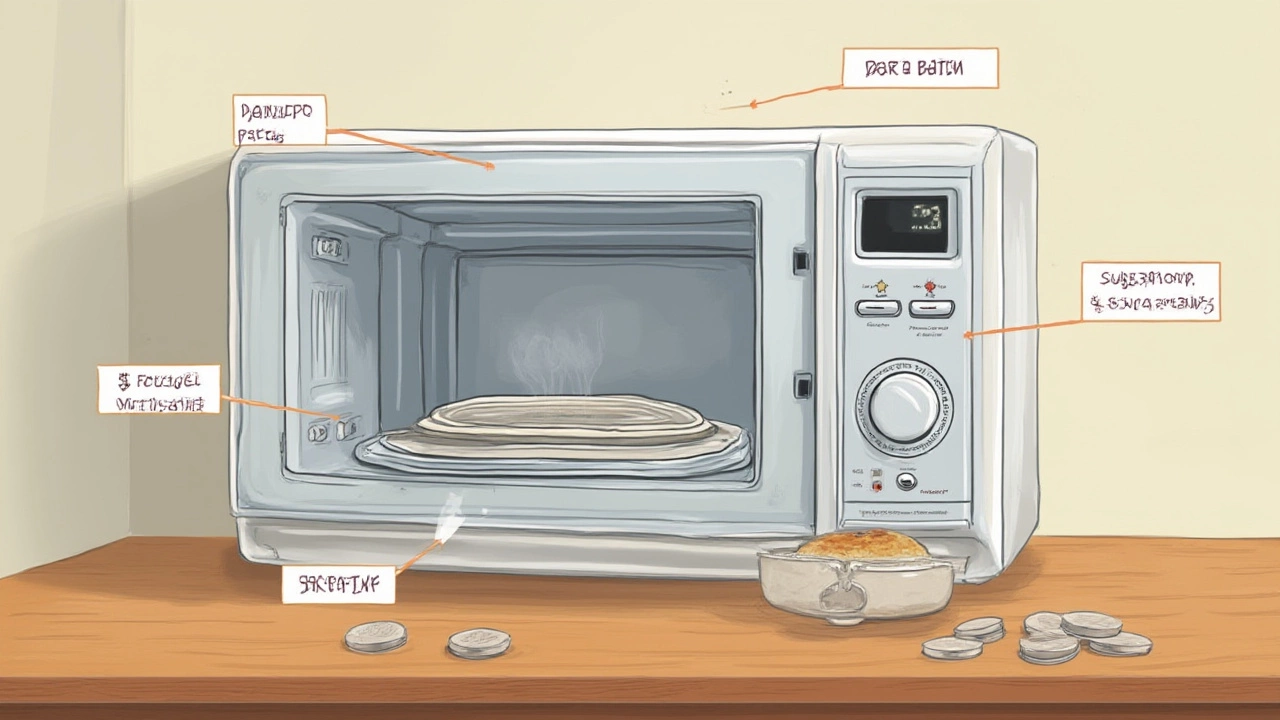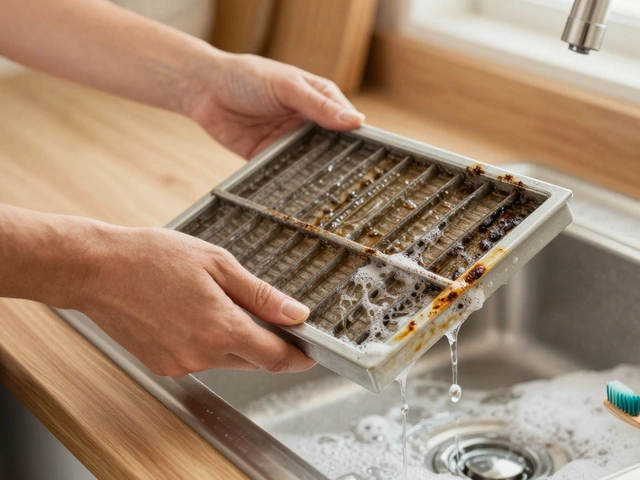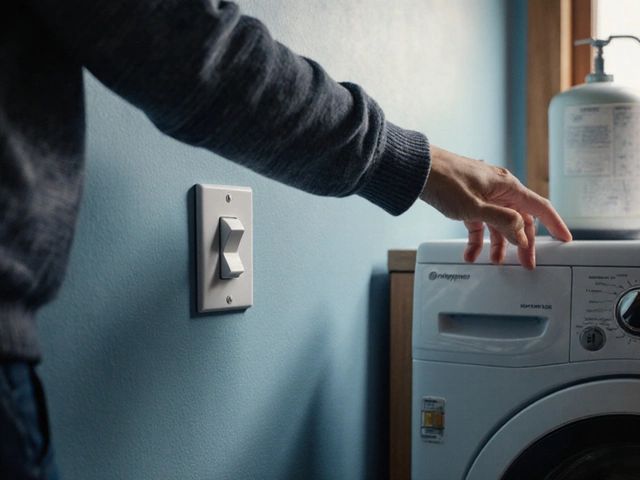Bang goes the popcorn, sizzle disappears, and suddenly, your microwave’s light flickers off for good. No drama, just sudden silence — but it’s a scene everyone’s run into at least once. You hit start, wait, and… nothing. No heat, no glow, maybe a strange smell. Modern microwaves aren’t exactly delicate, but they sure aren’t invincible. The thing is, nearly every microwave that goes down does so for the same one or two reasons. Yet, most of us don’t see it coming until breakfast is ruined.
The Heart of Microwave Trouble: Why Most Failures Start with Heating Problems
Let’s cut straight to it: the absolute most common cause of microwave failure is what’s called a magnetron breakdown. That’s the part that actually cooks your food — it produces the microwaves, makes your leftover pizza warm, and turns frozen veggies from rock-solid to steaming hot. When people say, “My microwave isn’t heating!” they’re talking about the aftermath of a magnetron issue most of the time.
It might sound like an obscure technical term, but the signs are obvious. Maybe your microwave runs, the timer counts, the plate spins, and yet, when you open the door, dinner’s still stone cold. It’s not always instant. Early warning signs can sneak up over weeks or months. Random cold spots, uneven heating, the weird hum changing pitch, or longer cook times — that’s your first clue the magnetron is struggling. Don’t ignore it because, in real numbers, more than 80% of all heating failures in microwaves are traced directly to a half-dead magnetron.
But why does the magnetron give out? Age is a factor, but how you use your microwave matters just as much. Running an empty microwave even a few times can trash a magnetron far faster than any years of normal, careful use. No food means nowhere for microwaves to go, bouncing back and heating the fragile internals instead. Power surges from a dodgy outlet or storms can send an extra jolt through the electronics, and, over time, that’ll fry the magnetron too. In rare cases, tiny bits of metal left by accident — like foil flecks in packaging — can spark inside the chamber and burn out the power supply.
Here’s a cool fact: The average lifespan of a magnetron is about 1,500-2,000 hours of use, so in a busy home, that’s five to seven years. But I’ve seen ones fail after three months in a college dorm because someone kept running it empty “just for fun.” It’s not always a dramatic explosion. Most magnetron deaths are slow fades, not sudden quits.
| Failure Cause | Percentage of Cases |
|---|---|
| Magnetron Failure | ~80% |
| High Voltage Diode Failure | ~8% |
| Door Switch Issues | ~6% |
| Control Board Malfunction | ~4% |
| Turntable Motor Fault | ~2% |
Don’t forget, microwaves are full of energy when running — about 2,450 MHz to be precise. If the magnetron isn’t operating safely, the rest of the machine just limps along uselessly. That’s why hardly any reputable repair tech will swap out other parts if heating is the main issue. They know the magnetron is the weak link. It’s also the priciest part in most cases, sometimes costing close to a new microwave itself, especially in basic countertop models.
If you’re handy, you might think about replacing just the magnetron. Here’s where it gets dicey. Opening a microwave isn’t like unscrewing a toaster. The capacitor inside can hold a charge deadly enough to send you off to meet St. Peter, even if it’s been unplugged for hours. So unless you’re certified and completely sure, don’t open that shell. Most safety guides recommend calling a pro — or just replacing the whole machine.

Not Just the Magnetron: Other Sneaky Microwave Killers and How to Spot Them
While the magnetron failure gets most of the blame, there’s a supporting cast of troublemakers that quietly take down microwaves too. Some are subtle; others are loud and obvious. If your microwave won’t start, stops mid-cycle, or the buttons don’t respond, odds are good the problem lies elsewhere — and knowing what to look for can save you some serious headaches.
Let’s talk about the high voltage diode. This unsung hero sits between the magnetron and the transformer, letting current pass in just one direction. When it dies, your microwave may light up but not heat a thing. Sometimes, you’ll hear a low, angry buzzing noise instead of the usual hum. If this part fails, the fix is simple — if you really know your way around high-voltage circuits.
Door switches are classic silent killers. You’d never guess, but modern microwaves have up to three tiny switches to make sure the door is really, truly closed. They sit behind the latch — and if even one slips out of alignment or wears down, you’ll get nothing at all: no lights, no spin, no beeps. Half the time, wiggling the door seems to solve it, but don’t be fooled. Bad switches get sticky and can stop working altogether at the worst possible time.
Control boards are like the brains of the operation. With all the digital displays and fancy cooking modes on today’s models, there’s a lot that can go wrong—power surges again, moisture from spills, or just aging solder points cracking with heat. When the keypad stops responding, the clock resets at random, or the numbers fade out, it’s time to suspect the control board. Some techs will try to replace just a burnt component (like a relay or capacitor) but often, the only solution is an expensive board swap.
Don’t sleep on turntable motors either. This little motor can burn out or jam if something big gets stuck underneath the plate or if heavy dishes bog it down. If you notice the plate not spinning, check for food debris and clean it out — that’s usually an easy save. But if the motor hums or clicks and nothing moves, it’s probably toast.
Curious about just how old your microwave is? There’s usually a manufacture date on the back or hidden inside the door frame. Most warranties last just a year or two, and, statistically speaking, after five years, your odds of major failure start climbing fast, no matter which brand you own. According to a large consumer survey published in 2023, about 14% of microwaves in the U.S. break down or need major repair during that window, with repairs trending towards magnetrons and door switches as the main causes.
A handy habit: Don’t slam the microwave door, as it can move those switches out of alignment. Also, wipe up spills as soon as they happen. Moisture can sneak into buttons and boards, and even a little bit of steam from soups can muck up sensitive electronics over time. Surge protectors can buy you years of extra use. Those cheap little single-outlet versions are fine if your kitchen gets hit by storms regularly.
- Keep the inside dry and clean. Sticky bits invite sparks and bad smells, and hidden metal fragments mean big trouble.
- If the light bulb inside keeps blowing, that’s a sign the control board or wiring could be failing—don’t ignore it.
- Microwaves are often cheaper to replace than repair if they’re more than five years old, unless you own a high-end combo unit.
- If you hear a clicking or popping noise when cooking, unplug the microwave and check for metalware or packaging stuck inside. That’s a recipe for sudden failure and possibly fire.
Curious how your model stacks up? Some online resources let you look up your microwave’s make and model to see common failure reports and estimated life expectancy.

How You Can Prevent the Most Common Microwave Failures
No one wants to replace a microwave every few years, so learning a few tricks to extend its life goes a long way. The key is avoiding those little habits that stack up damage over time, even if you don’t notice right away.
The number one rule: Never, ever run the microwave empty. It might seem obvious, but a shocking number of people hit “start” by mistake and walk off, letting the energy bounce around inside until something fries. Just a single empty cycle can torch a magnetron, kick-starting that slow snowball toward total failure.
If you accidentally drop a fork or chunk of foil inside, stop immediately and take it out. Microwaves bounce off metal, and the resulting arcing is bad news for every part in your machine. Even tiny sparks can burn up the waveguide, blow the diode, or trigger bigger failures later on.
Routine cleaning makes a huge difference. Spilled liquids can gradually corrode the turntable gear or seep into the electronics below — especially in cheaper models where seals aren’t perfect. A damp cloth, no hard scrubbing or chemicals, goes a long way. And if you cook something that splatters (looking at you, spaghetti sauce), it’s better to use a microwave cover.
One underrated trick? Unplug the microwave during thunderstorms. Surges or flickers in the power can spike that sensitive board or pop the fuse inside, and while surge protectors can help, they’re not perfect. For most people, it takes only a few seconds to pull the plug and save yourself a future repair bill.
If your microwave starts showing any signs of trouble — usually weird noises, smells, or long cook times — it’s not a bad idea to get it checked out early. Early repairs are almost always cheaper than waiting until the whole machine dies. Many repair shops offer free quotes or low-cost quick checks, especially if you bring in the control panel or turntable motor on its own.
So how do you know when to stop repairing and just buy a new one? If the magnetron or control board goes right after the warranty ends, the repair usually isn’t worth it. If it’s a cheap model or more than five or six years old, replacement is almost always the smarter bet. High-end built-ins can be worth the repair, especially if the rest of the kitchen matches.
A few final tips to squeeze the most out of your trusty microwave:
- Use microwave-safe containers and covers.
- Wipe down the door seals to keep the switches triggering cleanly.
- Avoid stacking heavy cookbooks or other appliances on top, which can stress the ventilation.
- Keep vents and fans clear to prevent overheating. A hot microwave ages much faster.
- If you hear buzzing, popping, or smell burning plastic, unplug immediately and have it checked.
Microwaves are one of those rare kitchen tools that just work — until they don’t. The secret killer is almost always the magnetron, hanging in there until a surge, spark, or empty run finally takes it out. But with just a little bit of care, and a sharp eye for trouble, you can avoid most common failures before they ever hit your next meal.





